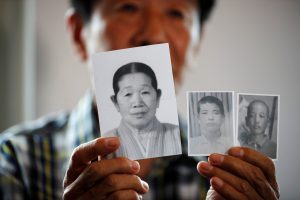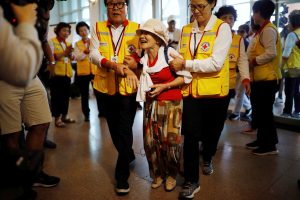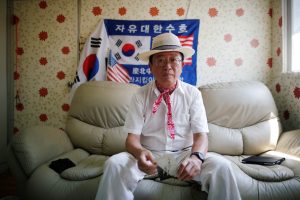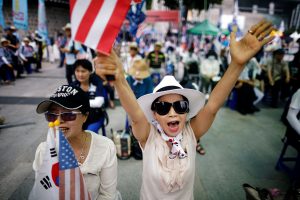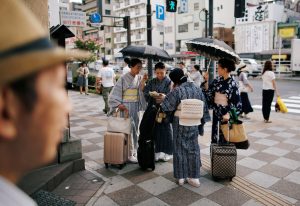
By Hyonhee Shin and Soyoung Kim
SEOUL (Reuters) – North Korea said on Wednesday it would permanently abolish its key missile facilities in the presence of foreign experts, in a new gesture by leader Kim Jong Un to revive faltering talks with Washington over his country’s nuclear program.
After a summit in Pyongyang, Kim and South Korean President Moon Jae-in said the North was also willing to close its main nuclear complex but only if the United States took unspecified reciprocal action.
The pledges Kim and Moon made at their third summit this year could inject fresh momentum into the stalled nuclear negotiations between Washington and Pyongyang and lay the groundwork for another meeting Kim recently proposed to U.S. President Donald Trump.
“I don’t think President Moon got everything he was seeking from these interactions, but Kim Jong Un gave Moon some tangible things for which he can take credit,” said Michael Madden, an analyst at the Stimson Centre’s 38 North think tank in Washington.
“These are good-faith gestures which will likely facilitate further and more substantive negotiations,” Madden said, adding a second summit between Kim and Trump was “highly probable”.
Kim pledged to work toward the “complete denuclearization of the Korean peninsula” during his two meetings with Moon earlier this year and at his historic June summit with Trump in Singapore.
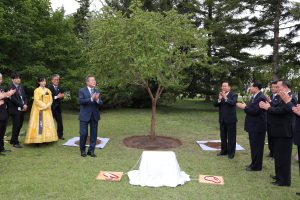
South Korean President Moon Jae-in attends an unveiling ceremony of the commemorative tree in Pyongyang, North Korea, September 19, 2018. Pyeongyang Press Corps/Pool via REUTERS
But discussions over how to implement the vague commitments have since faltered. Washington is demanding concrete action towards denuclearization, such as a full disclosure of North Korea’s nuclear and missile facilities, before agreeing to key goals of Pyongyang – declaring an official end to the 1950-53 Korean War and easing tough international sanctions.
Trump welcomed the latest pledges, saying they were part of “tremendous progress” with Pyongyang on a number of fronts, and hailed the “very good news” from the Korean nations’ summit.
“He’s calm, I’m calm – so we’ll see what happens,” Trump told reporters at the White House, referring to Kim. “It’s very much calmed down.”
But the United States is likely to be concerned economic cooperation plans announced by the two Korean leaders that could undermine U.S.-driven United Nations sanctions against North Korea.
Speaking at a joint news conference in Pyongyang, the two Korean leaders agreed to turn the Korean peninsula into a “land of peace without nuclear weapons and nuclear threats.”
Kim said he would visit Seoul in the near future, in what would be the first-ever visit to South Korean capital by a North Korean leader. Moon said the visit was expected to take place by the end of the year.
The leaders also announced a series of steps to deepen bilateral exchanges in the economy, culture and sport.

South Korean President Moon Jae-in, first lady Kim Jung-sook, North Korean leader Kim Jong Un and his wife Ri Sol Ju visit Taedong River Seafood Restaurant in Pyongyang, North Korea, September 19, 2018. Pyeongyang Press Corps/Pool via REUTERS
VERIFICATION
Kim’s latest promises come days before Moon meets Trump in New York at the U.N. General Assembly next week. South Korean officials hope Moon will be able to convince Trump to restart nuclear talks with Pyongyang, after he canceled a trip by his secretary of state to North Korea last month, citing lack of progress.
Though North Korea has unilaterally stopped nuclear and missile tests, it did not allow international inspections of the dismantling its main nuclear test site in May, drawing criticism that its action was for show and could be easily reversed.
As a next step, North Korea will allow experts from “concerned countries” to watch the closure of its missile engine testing site and launch pad in the northwestern town of Dongchang-ri, according to a joint statement signed by Moon and Kim.
The facilities were a key test center for North Korea’s intercontinental ballistic missiles designed to reach the United States.
The North also “expressed its readiness” to take additional measures, such as a permanent dismantlement of its main nuclear facilities in Yongbyon should there be unspecified corresponding action from the United States, according to the statement.
Those U.S. steps could include an end-of-war declaration, South Korea’s national security adviser, Chung Eui-yong, told reporters.
The neighbors remain technically at war because the Korean War ended in armistice and not a peace treaty.
North Korea has consistently refused to give up its nuclear arsenal unilaterally, and stressed that the United States should first agree to a formal declaration ending the war.
Satellite images and other evidence in recent months have suggested North Korea is continuing to work on its nuclear program clandestinely.
Seo Yu-suk, a research manager at the Institute of North Korean Studies in Seoul, said the facilities at Dongchang-ri and Yongbyon were “almost obsolete” and the North has mobile missile launchers that are easier to use and harder to detect, while there are likely covert sites elsewhere.
SANCTIONS BUSTING?
At the summit, the two Koreas agreed to begin construction to reconnect railways and roads linking the countries within this year. They will also work to restart a joint factory park in the North border city of Kaesong and tours to the North’s Mount Kumgang resort, when conditions are met.
Some experts worry those projects could constitute a violation of U.N. Security Council sanctions aimed at drying up resources for Pyongyang’s weapons programs, and upset Washington.
The two Koreas also agreed to pursue a bid to co-host the 2032 Summer Olympic Games, and actively work together in other international competitions including the 2020 Olympic Games in Tokyo.
Later on Wednesday, Moon was scheduled to watch the North’s signature “Brilliant Fatherland” Mass Game, with a formation of glowing drones, lasers and stadium-sized gymnastics shows designed to glorify the country.
On Thursday, the last day of his three-day visit, Moon plans to visit Mount Baektu in North Korea with Kim before returning home.
North Korea says Kim’s grandfather and father were born at Mount Baektu, a centerpiece of the North’s idolization and propaganda campaign to highlight the ruling family’s sacred bloodline.
(Reporting by Hyonhee Shin, Joyce Lee, Soyoung Kim and Joint Press Corps; Additional reporting by Jeongmin Kim, Haejin Choi and Ju-min Park in Seoul, and Roberta Rampton and David Brunnstrom in Washington; Editing by Alex Richardson and Alistair Bell)





